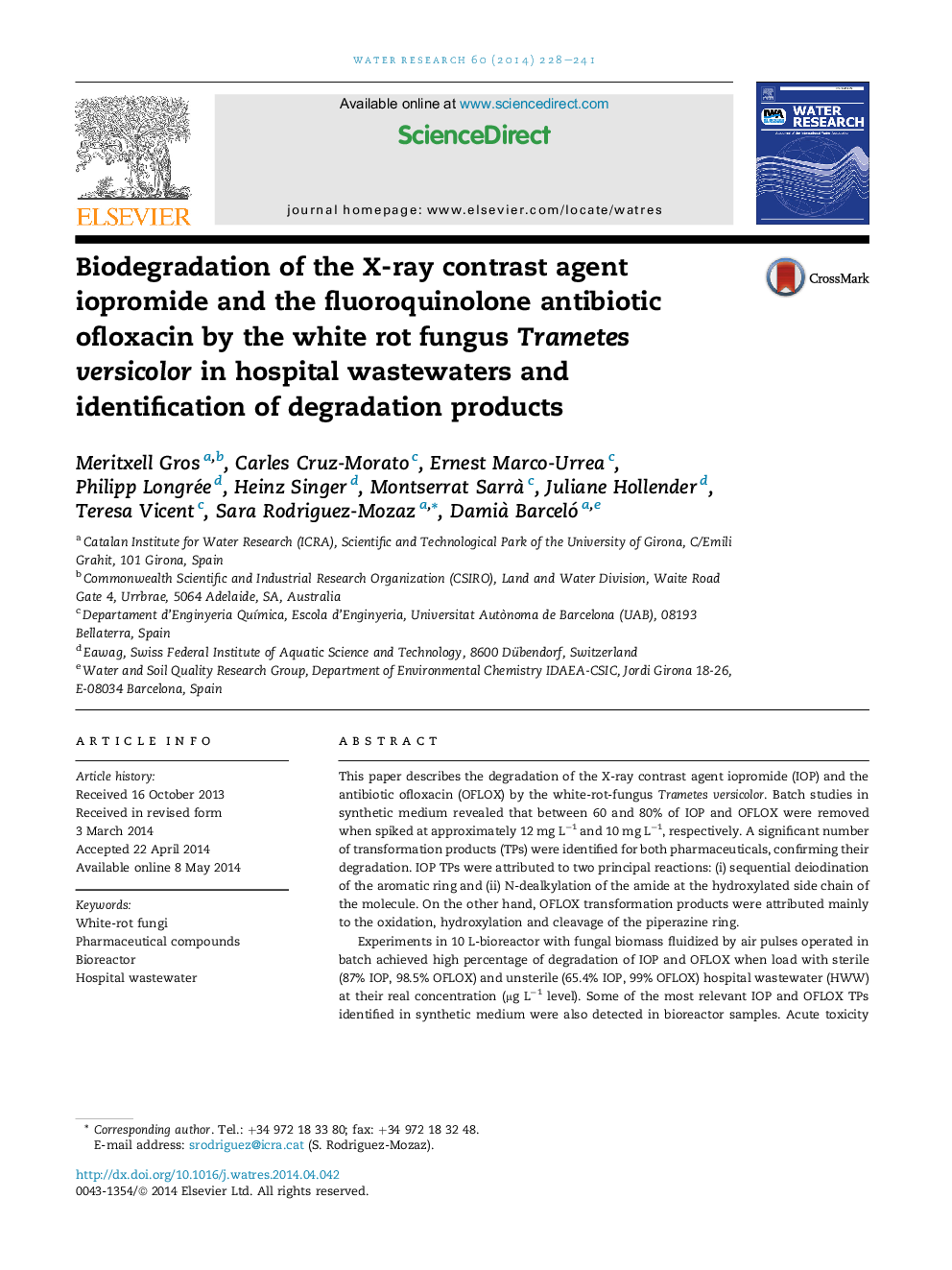| Article ID | Journal | Published Year | Pages | File Type |
|---|---|---|---|---|
| 4481512 | Water Research | 2014 | 14 Pages |
•Degradation of pharmaceuticals in hospital wastewaters by Trametes versicolor.•Identification of IOP and OFLOX transformation products in synthetic medium.•Detection and monitoring of transformation products in hospital wastewater treatment.•No toxicity increase was detected after the fungal treatment.
This paper describes the degradation of the X-ray contrast agent iopromide (IOP) and the antibiotic ofloxacin (OFLOX) by the white-rot-fungus Trametes versicolor. Batch studies in synthetic medium revealed that between 60 and 80% of IOP and OFLOX were removed when spiked at approximately 12 mg L−1 and 10 mg L−1, respectively. A significant number of transformation products (TPs) were identified for both pharmaceuticals, confirming their degradation. IOP TPs were attributed to two principal reactions: (i) sequential deiodination of the aromatic ring and (ii) N-dealkylation of the amide at the hydroxylated side chain of the molecule. On the other hand, OFLOX transformation products were attributed mainly to the oxidation, hydroxylation and cleavage of the piperazine ring.Experiments in 10 L-bioreactor with fungal biomass fluidized by air pulses operated in batch achieved high percentage of degradation of IOP and OFLOX when load with sterile (87% IOP, 98.5% OFLOX) and unsterile (65.4% IOP, 99% OFLOX) hospital wastewater (HWW) at their real concentration (μg L−1 level). Some of the most relevant IOP and OFLOX TPs identified in synthetic medium were also detected in bioreactor samples. Acute toxicity tests indicated a reduction of the toxicity in the final culture broth from both experiments in synthetic medium and in batch bioreactor.
Graphical abstractFigure optionsDownload full-size imageDownload high-quality image (255 K)Download as PowerPoint slide
